Posts Tagged ‘History’
Pythagoras and his theorem
Posted on: October 12, 2009
- In: Science
- 4 Comments
Numbers are all around us. They’re in the food we eat – “4 table spoons of sugar, 250g of butter, etc.” They’re on our television screens – the TV show Numb3rs is about a mathematical genius, Charlie Eppes who helps his brother, FBI Special Agent Don Eppes, solve cases using numbers. They’re in Pop music too, without numbers, we wouldn’t have our top 100 hits charts, and artists wouldn’t be able to get their songs to No.1.
And not to mention telephone numbers. Without numbers, maybe telephones and mobiles phones will use pictures to identify a person? – “Oh sorry, I called you by mistake; I wanted to call your twin, so sorry.” But a part of what makes numbers so very important is our age. Without numbers, we wouldn’t know when we were born, or how old we are.
Now another good thing about numbers (or a bad thing about numbers depending on you) is math. Math, like numbers, is terribly useful and can be used to find the areas of triangles and other important things like that.
If you have studied math before, no doubt you would have heard of the Pythagorean Theorem. Which is the formula for finding the area of a right angled triangle: a² + b² = c². What that means, is a², or the height of the triangle, multiplied by b², the base of the triangle, equals c², the hypotenuse of the triangle. See the diagram below for a clearer view.

Pythagoras' Theorem
This mathematical formula is a priceless and significant part of math as we know it today. So who could have been so clever to think up this formula? None other than a man called Pythagoras.
Pythagoras and math
Pythagoras (c. 570 BC – c. 495 BC) was a Greek mathematician, musician, philosopher and scientist. He was a significant part of the development of math, yet not much is known about him as none of his writing has survived. Though he didn’t leave behind any great writings, he left behind a way of life. His disciples called themselves the Pythagoreans.
The Pythagoreans were a select and secretive group and were divided into two groups merely on the base of their interest. One of them were called the akousmatikoi (“listeners”), who were focused more on the religious side of Pythagoras’ teachings, and the other were the mathēmatikoi (“learners”) who were focused more on of the scientific and mathematical side of Pythagoras’ teachings.
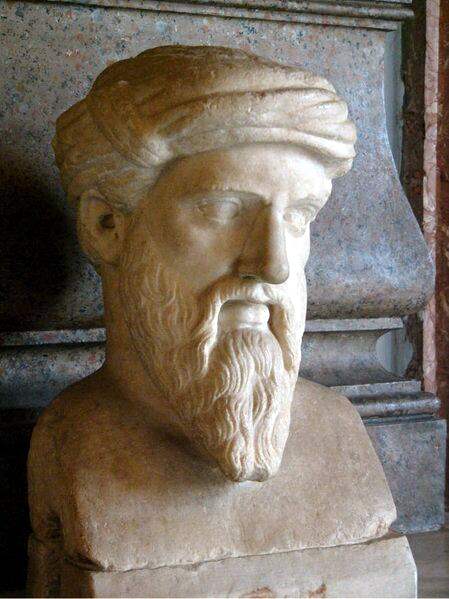
A bust of Pythagoras himself.
Nonetheless, the Pythagoreans in general adored numbers, and believed them to be the building blocks of life. They believed that each number had their own personality, and that the explanation for something existing could be explained through numbers.
But becoming a disciple of Pythagoras the man supposedly “sent from the gods”, was a very long process. The applicant’s charter, habits, feelings, words, actions and their way of life in general would be examined by Pythagoras himself, and only if they passed successfully would they be accepted into his school.
If they succeeded, they would then have to give all their property to the school, as everything was held in common. Then, for the next three years, they would have no vote in proceedings, and no medical treatment. And after that, they were required by the school to observe silence for five years, with the aim of training them to tame themselves, first to listen and then to attain wisdom.
If after those long eight years or so the pupil was considered unsuitable, he would be expelled and all his property returned. But, despite the risk of being expelled after all the hard work put in, many people from all over the region flocked to Pythagoras’ school, with hopes of learning from the great master himself.
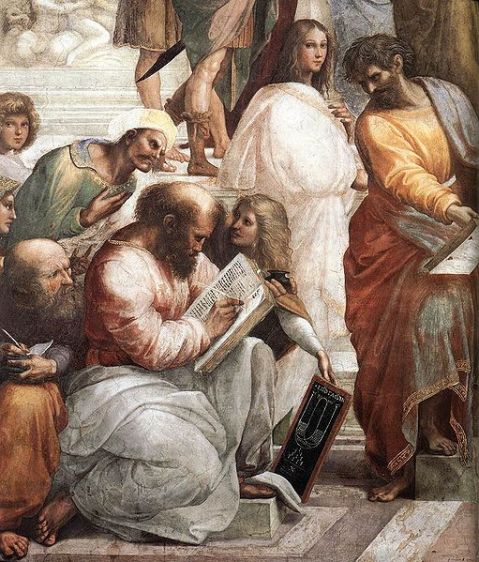
Pythagoras is the bald one in the middle. He is teaching his disciples music.
Pythagoras and music
Pythagoras not only discovered his famous theorem, but he also discovered the overtone series, which is what you hear on a modern piano today.
It is said that one day Pythagoras was passing by a blacksmiths workshop and he noticed the various harmonies coming from the blacksmiths shop. Later, he went back to investigate, and found that the different tones that came from the blacksmiths hammer when it hit the metal changed according to the weight of his anvil.
Pythagoras was intrigued. He experimented and found that by plucking a string one foot long it vibrates x times per second, and by plucking another piece of string two feet long, it vibrates 2x per second, but at the same pitch. Thus, plucking both strings simultaneously or one after the other, creates an octave.
After further experimenting, Pythagoras found that by dividing one of the strings into halves, thirds, quarters, or fifths of the original length while keeping the other string the same length and then plucking in a similar fashion created an octave, a perfect fifth, and a major third respectively. To hear the differences click here.
This discovery was very important to Pythagoras, for he realised that these tones played musically and in the right sequence on an instrument could change the behaviour patterns of a person and accelerate the healing process.
Pythagoras’ discovery of music prompted the opening of a Pythagoras Graduate School of Music and Sound Research in Finland, and focuses more on the academic side of music and less on the performance side. Their main research fields are:
- Musical acoustics and sound processing
- brain research
- music theory
- psychology of music
- media design
Pythagoras’ significant discovery lent further proof to the belief of the Pythagoreans: that everything, including music, was fundamentally made out of their beloved numbers.
The Lily Maid of Astolat
History, being rather unclear, has many different versions of Elaine, Lily Maid of Astolat, from the time of King Arthur and the Knights of the Round Table. In the French version of King Arthur, Mort Artu, she tries to get Sir Lancelot to wear her sleeve in a joust after she declares her love.
In Thomas Mallory’s Le Morte D’Arthur, she has fallen in love with Lancelot and he agrees to wear her sleeve in a jousting competition as the alternative to becoming involved with her.
In both versions, Elaine’s father, Bernard of Astolat, organises a jousting tournament, in which Lancelot participates. When Lancelot is wounded, Elaine convinces her father to bring him to her chamber for her to nurse him back to health.
While playing nurse, Elaine falls deeply in love with Lancelot. But when she confesses her love for him, he rejects her for he is in love with Queen Guinevere who is King Arthur’s wife. Unfortunately for Lancelot, King Arthur is his boss, and makes it hard for him to see Queen Guinevere. Elaine is heartbroken when Lancelot rejects her and consequently dies of a broken heart. As per her instructions, her family puts her in a barge and floats her down the river to Camelot with a note to Lancelot.
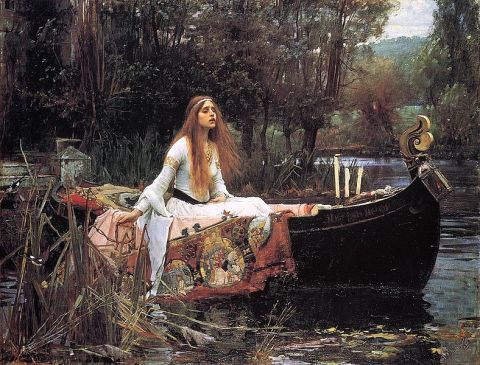
Elaine floating down the river.
When she reaches Camelot, she is discovered by the lords, ladies and knights of Camelot. Queen Guinevere is outraged with jealousy until she finds out that Elaine died a virgin and nothing ever happened between her and Lancelot.
Lancelot is guilt-ridden and pays for a lavish funeral for Elaine (which could have been what her family had hoped for in the first place by sending her floating down the river).
The Lady of Shalott
Alfred Tennyson, also known as Alfred, Lord Tennyson, is one of the more popular poets in the English language. He was also Poet Laureate – a position that he held longer than any laureate before or after him.
One of Tennyson’s most famous poems is The Lady of Shalott, based on the legend of Elaine of Astolat. Tennyson’s poem was on a poem he had read, Donna do Scalotta, and so it is very different from Thomas Mallory’s version. In this version, no joust ever took place, Elaine had never met Lancelot before, and she is under an undisclosed curse to forever weave a magic web in an isolated tower, with only a mirror to reflect the view from her window.
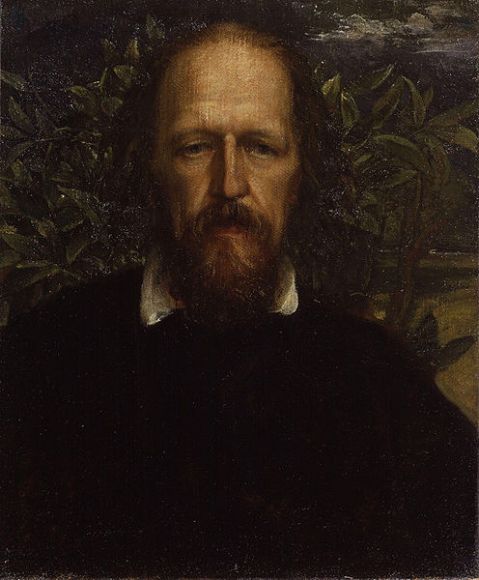
Lord Alfred Tennyson
However, one day the handsome knight, Sir Lancelot, rides past her window in the tower and the effect that he has on her is so strong that she turns to look out the window at him and the curse is broken. She leaves her tower and finds a boat near a riverbank. She writes her name on the prow and floats down the river to Camelot (in a subconscious effort to chase Lancelot, perhaps).
But before the boat reaches Camelot, she freezes to death and arrives at the palace of King Arthur where Lancelot stands among the Knights, lords and ladies, admiring her beauty.
“Under tower and balcony,
By garden-wall and gallery,
A gleaming shape she floated by,
A corse between the houses high,
Silent into Camelot.
Out upon the wharfs they came,
Knight and burgher, lord and dame,
And round the prow they read her name,
The Lady of Shalott.
Who is this? and what is here?
And in the lighted palace near
Died the sound of royal cheer;
And they cross’d themselves for fear,
All the knights at Camelot:
But Lancelot mused a little space;
He said, “She has a lovely face;
God in his mercy lend her grace,
The Lady of Shalott.”
– Excerpt from Tennyson’s The Lady of Shalott.
The story of Elaine of Astolat has been changed and re-moulded many times. The unrequited love that she bore is very much a human experience, making her character more real than most of the others in the time of King Arthur. Though her actions may have been a bit drastic, she has given us great stories and poems, for such is the wonder of the Lady of Shalott.
The French Revolution
Posted on: July 24, 2009
France was not always the generally peaceful country which we know today. In the 1700s, France underwent an enormous upheaval which undermined its Monarchy and changed to a Republican government.
But how did it all start? Well, in 1789, the people of France decided that it was…
…the Last Straw
When King Louis XVI of France ascended to the throne, the country was already nearing bankruptcy. Historians generally think that Louis XVI’s predecessor, King Louis XV, is to blame. Louis XV had fought many wars; therefore sending the country into an economic crisis. Naturally, the people of France were not happy with that, as taxes were raised very high for the starving nation. At that time, the streets of France were terribly dirty, and diseases were common. There were many people living on the streets as well. For the impoverished people, looking at the well dressed royals stuffing themselves certainly did not help matters.
In fact, it was the last straw.
Do You Hear the People Sing?
In 1789, the people of France, lead by Napoleon Bonaparte, began the fight against the monarchy. But what really started the ball rolling was the Tennis Court Oath. The Tennis Court Oath was the historic event where 576 out of the 577 members of the Third Estate (the Third Estate consisted of the everyone who was not rich, in other words, the poorly paid working class people, and the even poorer, poorly paid peasants) and a few members of the First Estate were fed up with the Monarchy, and gathered themselves into an indoor tennis court and solemnly swore a collective oath which goes as follows:
We swear never to separate ourselves from the National Assembly, and to reassemble wherever circumstances require, until the constitution of the realm is drawn up and fixed upon solid foundations.
Not long after the Tennis Court Oath, they stormed the Bastille prison, for though it held few prisoners and was about to close, the Bastille symbolized the royal oppression, and thus, it fell. The guardian of the Bastille was Bernard-René de Launay, who was actually born in the Bastille prison, as his father was the previous guardian. De Launay felt the brunt of the National Assembly’s force, and was battered to death by a raging mob.
Four years and two months after the revolution began, the era which would be known as “The Reign of Terror” (1793 – 1794) began. Led by Napoleon Bonaparte, monarchs (including King Louis XVI) were guillotined left; right and centre, and an estimated 30,000 people were killed all across France. The first victim of the guillotine was the unpopular and tragic queen, Marie Antoinette. Ironically, when Marie Antoinette first reached France, she was but 14, and adored by the people.
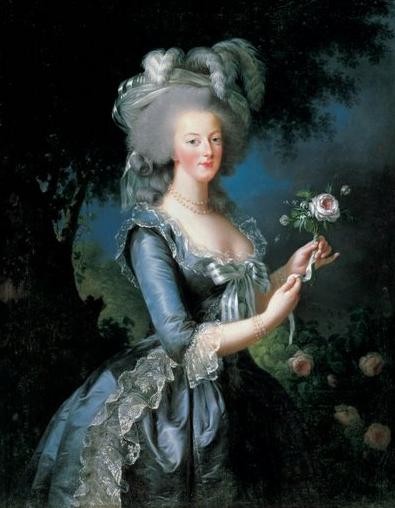
Things went downhill around 1782 – 1785; Antoinette had already given birth to a daughter and a son, and with a family enlargement in mind, she bought the Château de Saint-Cloud independently from the husband, King Louis XVI. At that time, the public was developing a highly frivolous image of the Queen, and the purchase of the Château de Saint-Cloud certainly did not help. The public was quickly seeing Marie Antoinette as an empty-headed, spendthrift foreign queen.
Liberty, Equality, Fraternity
In 1799, while stranded in Egypt, Napoleon heard news of the British’s temporary departure from the French ports and set sail for France. Upon returning, he set about to seize power. On the 9th of November 1799, he overthrew the French Directory (the body of five which had been holding the power in France) and replaced it with his own French Consulate, which consisted of three consuls. Of course, he declared himself the First Consul, but eventually, it lead to just one single consul, then finally, Emperorship.
However, Napoleon was not always in France, as he was busy conquering other countries and whatnot. But in 1812, his luck began to change as he was defeated in Russia. From then on, it all went downhill, and he lost his last battle, the Battle of Waterloo in 1815.
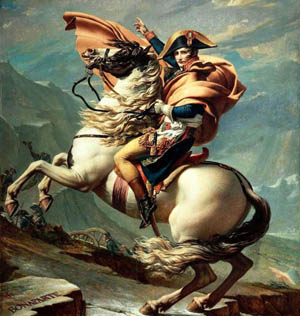
Napoleon died in 1821, it is generally thought that he died from stomach cancer, though some people say he was murdered by arsenic.
The French Revolution was a critical period in history, not only for France, but also for Britain, whose English radicals and numerous liberals wholly supported the revolution. Their motto was “Liberty, Equality, and Fraternity.”
The French Revolution’s influence stretches to the 21st century, mostly thanks to Victor Hugo’s novel, later turned into a musical, Les Misérables (also known as Les Mis or Les Miz). On October 8, 2006 the show celebrated its 21st anniversary, and it’s achievement as the longest running West End musical. Interestingly, it’s not written by Andrew Lloyd Weber, who wrote a significant amount of the modern musicals showing today, but in the original French version, the music is by Claude-Michel Schönberg and the lyrics are by Alain Boublil and Jean-Marc
Les Mis the book and the play has been translated into various languages, from Polish to Japanese to the obvious English. A recent revival of Les Misérables in pop culture is Britain’s Got Talent’s Susan Boyle’s version of “I Dreamed a Dream” from Les Misérables.
The French Revolution started in 1789 and ended in 1799. In those ten years, France entered a zone of turmoil, grief, and violence. But it was also a time of renewal, a much needed change of government and overall change for the better.
When you think of classical music, three composer’s names tend come up: Wolfgang Amadeus Mozart, Ludwig van Beethoven and Johann Sebastian Bach.
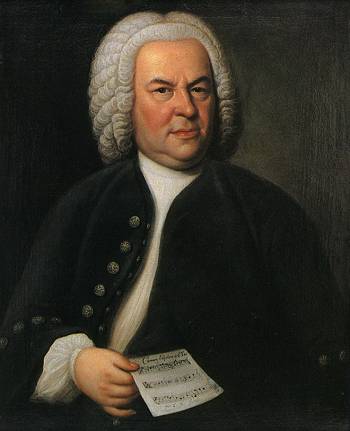
Johann Sebastian Bach
Despite them all having been around at different times (though Mozart and Beethoven met briefly in Vienna), they had something in common. They were all geniuses. And they were all not appreciated in their own times. Later, though, the works of Bach was rediscovered by Felix Mendelssohn, who arranged for a performance of St. Matthews Passion in 1829. It was a resounding success and it earned Mendelssohn much acclaim at the early age of 20. After that performance, Wolfgang Schmieder began indexing Bach’s works giving us that lovely “B.W.V” next to a number that we now see beside every one of Bach’s pieces.
How did this wonderful composer come about to this earth? Well, let’s go back to the beginning…
The Time of Bach
Johann Sebastian Bach was born in 31 March 1685 and died in 28 July 1750.
Bach lived during the period of music known as the Baroque period. If you study Classical music, you will notice that pieces composed in the same era will sound similar. For example, if you were to compare Johann Pachabel and Antonio Vivaldi, they would both have about the same styles, such as the Poly-phony style in which there are two voices in one piece, and not just melody and harmony as it evolved into in the Classical period. If you don’t recognize the names, Johann Pachabel is best known for his Canon in D, the only canon he ever wrote, and Antonio Vivaldi is best known for his Four Seasons composition.

Bach's own handwriting
Another composer from the baroque period and J.S Bach’s contemporary is Georg Friedrich Händel – who later added an “E” to the “Georg”, changed the “Friedrich” to “Frideric” (though who could blame him – Fried-rich?) and dropped the two dots above his “ä” in his “Händel” when he moved to England and became a subject of the country, making him George Frideric Handel.
A person, who had much to do with Bach’s career and who could have changed it was Georg Philipp Telemann, who in his time exceeded Bach’s popularity greatly as he was offered a post in Eisenach as Kapellmeister over Bach. Despite that, Telemann and Bach may have kept up a strong correspondence with one another, and Telemann was even godfather of one Bach’s own son, Carl Philipp Emanuel Bach.
Curiously, although Handel lived about 50 miles away from Bach in later life, they never once met – a fact which Bach regretted deeply.
When Bach was 10, he became an orphan and was sent to live with his oldest brother, Johann Christoph Bach. It was there that, at midnight, when everyone was asleep, he would creep down to his brother’s study and copy music in a dimly lit room. It may have been because of this that later in life his eyes gave out and he died shortly after a failed eye operation.
When J. S. Bach was 22, he decided that he was of the age to settle down and choose a wife. He had fallen deeply in love with his cousin, Maria Barbara Bach, and so it was perfect that they should marry. In those days, marrying one’s cousin was not scandalous at all, and considered okay as long as it was your 2nd cousin and not your 1st. Scary, isn’t it? Bach and Maria had seven children together, of which four survived childbirth.
They had a comfortable and happy marriage until Maria’s sudden death in 1720. According to Maria and Bach’s second surviving son, Carl Philipp Emanuel Bach, Johann Sebastian was away in the Carlsbad spa with his employer, the Duke of Anhalt-Cöthen, when Maria died. When Johann Sebastian returned to their home in Cöthen, he found out that she had died and had already been buried.
Bach took a year to mourn but looking after four children was not an easy task. He was a busy man as the Kapellmeister (director of music) to Prince Leopold of Anhalt-Cöthen and so he married Anna Magdalena Wilcke in 1721 to help out with the washing up, presumably. Anna Magdalena was 17 years Bach’s junior and a very talented soprano singer. Bach wrote a number of compositions dedicated to her, most notably the Notebook for Anna Magdalena.
Together, they had 13 children, of whom six survived.
It has to be said that Bach, like Beethoven, was rather grumpy in his time, but perhaps that is to be expected of a perfectionist.
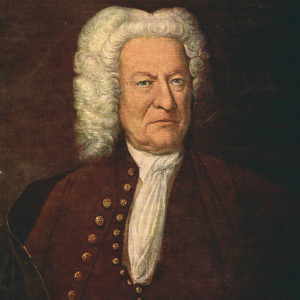
And older Bach looking rather grumpy.
After Bach
Bach’s legacy lives on, and is an irreplaceable part of every classical musician’s repertoire. The Classical era gave us melodious composers such as Joseph Haydn, Johann Christian Bach, Muzio Clementi and Wolfgang Amadeus Mozart.
The Romantic period gave us breath-taking composers such as Felix Mendelssohn, Pyotr Ilyich Tchaikovsky, Frederic Chopin and Ludwig van Beethoven.
The Baroque music gave us many marvelous composers like Arcangelo Corelli, George Frideric Handel, Johann Pachabel and Antonio Vivaldi, but none like the great Johann Sebastian Bach.
Since Mendelssohn’s history changing discovery, Bach has garnered many admirers’, among whom, are Frederic Chopin, Wolfgang Amadeus Mozart and Ludwig van Beethoven. He has influenced thousands of young composers in both Classical and Rock/Pop genres. In fact, his Toccata and Fugue in D minor has been used in many rock songs. Bach has even been referred to as the “father of all music” – a title that has never been more true.
Bach’s Toccata and Fugue in D minor.
Michelangelo: His Life and Times
Posted on: January 6, 2009
Michelangelo di Lodovico Buonarroti Simoni was born in Caprese in Tuscany, Italy in 1475.
He was a Renaissance painter, sculptor, architect, poet and engineer, and though he much preferred sculptures to paintings, two of his paintings – the scenes from Genesis on the ceiling of the Sistine Chapel and The Last Judgment – are considered to be some of the most influential fresco works in the history of western art.
Unlike many people who lived in the Middle Ages, Michelangelo lived to the ripe old age of 88, though during the most of those 88 years he was, to put it simply, pretty crabby. In his youth, he had gotten into a fight with another sculptor, and his nose got broken permanently.
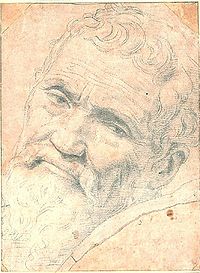
Michelangelo never married in his lifetime.
Michelangelo’s career started when his father sent him to study grammar with Francesco da Urbino in Florence when he was still very young. However, he disliked studying, opting instead to copy paintings from churches and hang out with other painters.
When Michelangelo was 13, he apprenticed in painting with Domenico Ghirlandaio, who was a significant fresco painter, and then in sculpture with Bertoldo di Giovanni, who was the head teacher at a school founded by Lorenzo de Medici – who was at that time Florence’s ruler. Then, in 1489, Lorenzo de Medici, asked Ghirlandaio for two of his best students, and Ghirlandaio sent over Michelangelo and Francesco Granacci.
Michelangelo attended Lorenzo’s school from 1490 – 1492. It was here that he met many literary personalities and created Madonna on the Rocks (1490 – 1492) and Battle of the Centaurs (1491 – 1492), the latter of which was commissioned by Lorenzo de Medici.
When Lorenzo de Medici died in 1492, Michelangelo returned to his father’s house and there he carved a wooden crucifix for the Santa Maria del Santo Spirito church because they had ever so kindly given him some corpses from the churches’ hospital, thus allowing him to study the human anatomy.
That may sound gross to you and me, but in those times knowledge of the human anatomy was scarce, and both Michelangelo and his rival, Leonardo da Vinci, were very interested in human anatomy.

Leonardo da Vinci had many futuristic ideas when he was alive, such as working toilets.
Leonardo da Vinci and Michelangelo’s rivalry extended throughout both their careers. How did they become rivals? Well, though Leonardo da Vinci was nearly 25 years older than Michelangelo, they were both contenders for the title of “Renaissance Man”. They were both geniuses and extremely gifted in the art field. Oh yeah, and they both hated each other from the moment they met.
One of the reasons why that is (or the only reason, really) is that because of Leonardo’s age, he had already become old news when Michelangelo became the ‘it’ person. When Michelangelo rose to stardom, Leonardo was 51 and his hair and beard had turned white and he was pretty much old news. And so when Michelangelo started getting all the jobs that Leonardo wanted, Leonardo became exceedingly jealous.
One thing that’s similar about Michelangelo and Leonardo da Vinci is their sexuality. Both of them have had their sexuality questioned, analysed and studied. While both of them kept their private lives private, Michelangelo’s poems gave him away. For example, when Cecchino dei Bracci died just a year after they met in 1543, it inspired Michaelangelo to write 48 epigrams for his funeral.
However, Michelangelo’s greatest love was Tommaso dei Cavalieri, for whom he wrote almost 300 sonnets and madrigals. Cavalieri’s feelings for Michelangelo were mutual, as demonstrated in his written words: I swear to return your love. Never have I loved a man more than I love you, never have I wished for a friendship more than I wish for yours.
The true nature of their relationship is still under speculation today. And it got all the more complicated when Michelangelo’s nephew, Michelangelo the Younger, recognized the implications of the poems and changed the gender of the pronouns. But then, in 1893, when John Addington Symonds, the early British homosexual activist, translated the original poems into English, he undid the gender change and made things clearer.
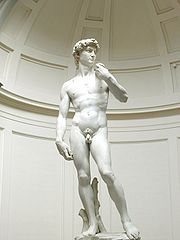
The Statue of David - Michelangelo had a great love for the male beauty.
Michelangelo’s life was certainly an interesting one. The sheer volume of his letters and various sketches prove that he is the best documented artist of the 16th century. And probably one of the best artists of all time, too, but don’t tell Leonardo that.